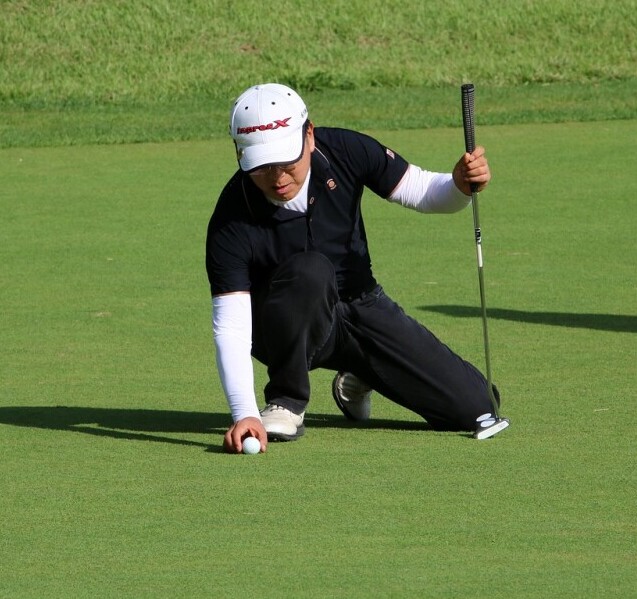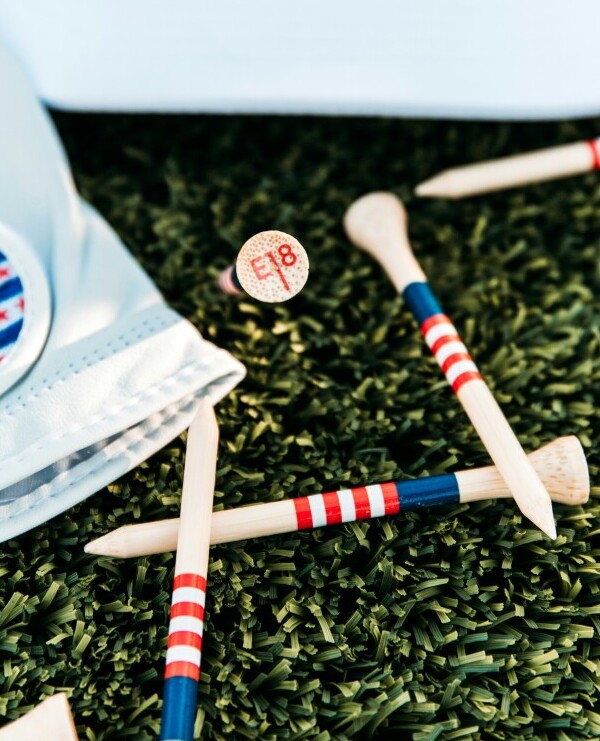Breaking Putts Vs. Straight Putts In Golf


In the world of golf, putting is where the game often takes an unexpected twist or a triumphant turn. Among the essential skills to master are the straight putt and the breaking putt. Recognizing the difference between the two can make or break your scorecard. Let the golf viking help guide you through this puzzle so that you’ll know how to handle every putt.
A straight putt is every golfer’s dream: a shot that glides directly towards the hole with no sideways movement. Imagine the ball moving like it’s on a laser-guided path. This type of putt usually comes into play on a level part of the green, where the ball won’t be influenced by slopes or uneven surfaces. It’s a great feeling when you walk up to that green and see your ball with a straight and easy line to the hole.
Now, breaking putts are a different story. These putts involve the ball curving due to the contours and slopes of the green. Picture the ball taking a gentle arc towards the hole, influenced by factors like the lay of the land, the grass direction, and even the wind. Mastering breaking putts requires an eagle eye for detail and a solid understanding of how to read the green. These can be much more difficult and will require more strategic thinking.
Why is it important to know the difference? Well, appreciating what kind of putt you’re facing can guide how you approach your shot. You’ll adjust your stance, your aim, and how much power you put behind your play. Not only does this knowledge improve your technique, but it also boosts your confidence on the green.
Visual aids are invaluable here. These include photos, diagrams, or even video tutorials showing the path of straight and breaking putts. Seeing examples can really help internalize how these shots behave. So next time you’re out on the green, you’ll be ready to tackle any putt that rolls your way. So how can we hit our straight putts?
Reading the green correctly is key whether you’re facing a break or a straight putt. Our guide to short game mastery will help you develop the touch and feel to make more putts from anywhere on the green.

The Mechanics of a Straight Putt
Nailing a straight putt can be one of the most satisfying aspects of golf. It’s all about precision and consistency, and with a few key techniques, you can start hitting them like a pro. Let’s talk stance first—you want to be relaxed, feet shoulder-width apart, and eyes directly over the ball. This stance keeps you grounded and centered, letting your arms swing freely.
Grip on the club will be the next focus. Hold your club with a relaxed but firm grip. You want to hold it so that your club won’t sway as you swing but making sure not to hold onto the club so tight as to make your swinging motion come across as stiff.
Alignment is your next focus. Imagine a line extending from your ball to the hole. Your putter’s face should be square to this line at strike. Any deviation and you risk missing the mark. Training your eyes to align correctly can be a game-changer, so routinely practicing with alignment aids or lines on your ball can sharpen this skill.
Then comes the follow-through, arguably the unsung hero of the process. A smooth, controlled motion ensures the ball rolls evenly towards the target, reducing the chance of wobble. Think speed, not muscles—the more fluid your motion, the more accurate your putt will be. Keep your aim true throughout the entire motion of your swing.
Common challenges you might face include adjusting for varying green speeds or dealing with nerves. Fast or slow greens can alter the ball’s speed, requiring slight adjustments in your swing. As for nerves, the key is focus. Develop a pre-putt routine that calms your mind and centers your energy on the task. Being tense and anxious will only make putting harder.
Practice is crucial to mastering the straight putt. Set up drills where you repeatedly hit straight putts from different distances. You might try the “gate drill,” setting tees or obstacles just wider than your putter for your stroke to pass through. This builds muscle memory for the perfect putt. Give yourself a few extra practice putts after finishing a hole.
With the right mindset and practice, your straight putts will become a strong part of your golf arsenal. Remember, it’s about finding a rhythm that works for you and sticking to it consistently over time. Okay, now onto the bigger challenge; the breaking putt.
Distance control matters just as much as reading the line. Our article on the most accurate golf putters explains which putters help you roll the ball consistently on both straight and breaking putts.

Navigating Breaking Putts: A Comprehensive Guide
Breaking putts can be tricky, but they also offer an opportunity to show off your skills on the green. Reading the green is your starting point; pay attention to the slope, grain, and overall elevation changes. These details influence the path and speed needed for your putt. Having the most information will help you develop the best course of action.
Slope is the big boss here. The more the slope, the more the ball will curve. Take time to walk around your line, crouch down for a closer look, and let gravity guide your strategy. Combine this with an understanding of the grass grain, which can either speed up or slow down your putt depending on its direction. Understanding the slope and how to adjust to it will be crucial to sinking that putt.
Precision is your best buddy when dealing with breaking putts. Unlike straight putts, you aim not at the hole, but at an imaginary spot where you expect the ball to start breaking. Visualization is key; picture the ball’s curving journey and decide on the perfect point and pace. Play the ball off of where it’s going to roll from that slope.
Establishing a strategy involves a mix of science and art. It’s not just about angles and spots—it’s about feeling the green under your feet and trusting your instincts. Some pros recommend visualizing a clock face around the hole to help pick your aiming point based on the break’s severity. Get the feel for when that ball is going to break and you will know how fast or hard to hit.
Speed control is crucial. Too much force and the ball races past the hole; too little, and it stops short. You’re looking for a balance where the ball has enough speed to hold its line while still having the chance to drop into the cup should it slow down near the target. Having the right speed control will get the ball to break at the right time.
Learning from the best can boost your game. Watch professional golfers tackle breaking putts, noting their routine and adjustments. You’ll often see them rehearsing their stroke while staring intently at the line, internalizing the putt before ever making a move.
Mastering these putts comes down to practice and experience. The more rounds you play observing how different greens behave, the more intuitive your putt calculations will become. You’ll become better over time at judging and reading putts. Stay patient and keep experimenting with different strategies until you find what works for you.
Sometimes your approach shot dictates the type of putt you face. Learn how to land near the optimal spot in controlling trajectory with your irons and wedges to set up easier putts.

Strategic Comparisons: Breaking vs. Straight Putts
Both breaking and straight putts come with their own unique challenges and strategies, and knowing when to use each one is what separates top-notch players from the rest. The type of putt is going to change your approach to hitting the ball.
Breaking putts demand patience and a sharp eye for the green. Every contour counts, affecting how you’ll approach the shot. Straight putts, on the other hand, mostly rely on precision and technical consistency. Comparing these two involves looking at how each putt influences your play style and decision-making.
The choice often hinges on the course conditions. Wet greens might alter ball speed, impacting straight putts more than breaking ones, while faster greens might accentuate the curve on breaking putts. So you must factor in the conditions of the greens in order to adjust your game plan.
While straight putts can often feel more mechanical due to their repetitive nature, breaking putts pack the unpredictability factor, requiring you to adapt on the fly. The mental game is significantly different too, with breaking putts often testing a player’s creative thinking and resilience.
Many historic moments in golf have come down to executing the right putt at the right time. Think about those nail-biting tournament finishes where reading a complex breaking putt correctly resulted in either a stunning victory or a heart-stopping miss. These stories highlight the dramatic influence that mastering both putt types can have on your game.
Performance data can lend some perspective here too. While straight putts traditionally see higher success rates, being adept at breaking putts can rescue a round when the greens demand more than just a straightforward approach.
By recognizing the strengths and limitations of each, you can more effectively tailor your strategy to the course at hand. You never know when the right putt at the right time can save your round.
Every golfer faces moments where decisions need to be made, blending strategic awareness and technical skill to decide when to play it steady with a straight putt or when to trust your read on a tricky break. Ultimately, understanding the balance between these putts will refine your overall golfing prowess.
Course conditions can turn a straight putt into a tricky read. Check out adjusting strategy based on pin placement to better plan your approach and putt lines.

Mastering the Green: Perfecting Your Golf Putt Techniques
Bringing all your putting skills together on the green takes some finesse, blending both mental and physical elements to conquer any situation you face. Whether you’re hitting a straight putt or navigating a tricky break, maintaining focus and flexibility is your recipe for success.
Incorporating technology can give your practice a modern twist. Tools like putting mats, laser aiming devices, or phone apps that analyze your stroke can offer insights that transform your routine. Embrace these gadgets as they can pinpoint areas you might not notice on your own. These days there are many tools to help you hone your putting game.
Engaging with the golf community, whether it’s through local clubs or online forums, can provide fresh perspectives and techniques you haven’t tried yet. Hearing from instructors or seasoned players about their strategies can inspire you to tweak your own approach, or even try something completely new.
Consistency in practice remains key. Develop a routine that covers all types of greens and challenges, allowing you to become comfortable with your putting in a range of conditions. Remember, improvement often comes in gradual steps, so celebrate the small victories along the way. Don’t forgot to test out the putting green before your round to gauge how the greens are.
Keep in mind that putting is not just about technical ability but also about confidence and patience. Trust in your practice, stay calm under pressure, and the results will follow. Owning your putting game will make every round more enjoyable, and ultimately, more successful. I’ll see you out on the golf course, sinking every putt that comes your way.


